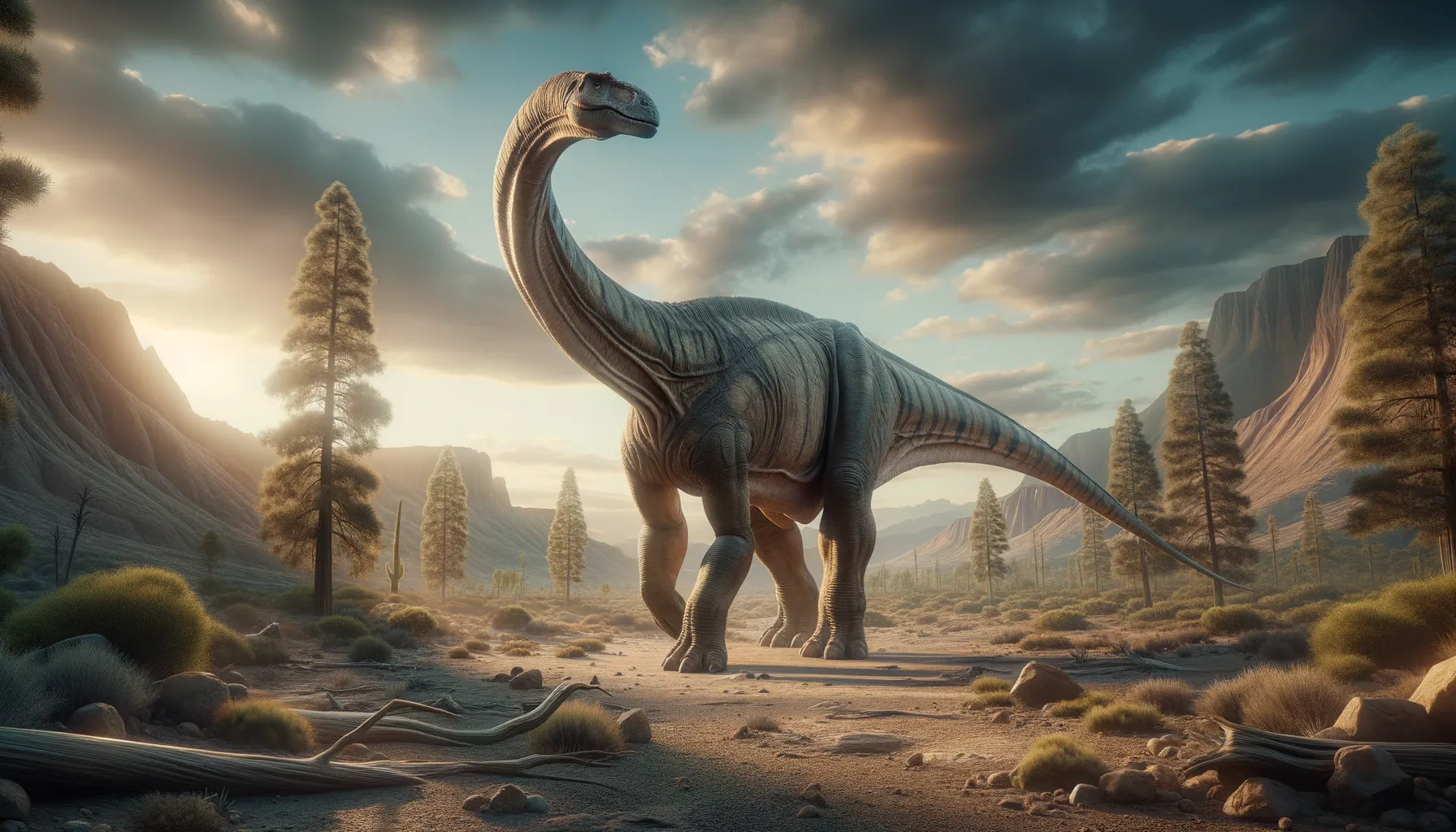
Sonorasaurus
The gentle giant from ancient deserts.
Period
Cretaceous
Length
About 49 to 56 feet long.
Height
Approximately 16 to 18 feet tall.
Weight
Estimated between 40 to 50 tons.
Sonorasaurus was a massive, gentle giant that roamed the Earth during the mid-Cretaceous period. Known for its enormous size, it belongs to the brachiosaurid group of dinosaurs, characterized by long necks and large bodies. First discovered in the rugged terrains of Arizona, Sonorasaurus provides insights into the diverse ecosystem of North America's prehistoric past. Its remains offer crucial data for understanding the migration and distribution of sauropods during this time.
Diet
Sonorasaurus was herbivorous, consuming vast amounts of plant material. It fed on the lush vegetation available during the Cretaceous period, using its long neck to reach high branches and foliage.
Hunting
As an herbivore, Sonorasaurus did not engage in hunting. It relied on its size and potentially its herding behavior as defense mechanisms against predators.
Environmental challenges
Sonorasaurus faced challenges from changing climates and potentially scarce food resources during its era. Its large size required vast amounts of vegetation, making resource competition a possibility. Additionally, predators like emerging theropods posed a threat despite its size advantage. It also had to navigate terrain that may have varied between lush and arid, depending on the climate shifts.
Speed
Relatively slow due to its large size.
Lifespan
Estimated to be 70 to 85 years.
First discovery
Discovered in the Sonoran Desert, Arizona in 1995.
Fun Facts
- Sonorasaurus was named after the Sonoran Desert in Arizona, where its fossils were discovered.
- This dinosaur was a type of sauropod, which means it was related to other long-necked dinosaurs like Brachiosaurus.
- Sonorasaurus lived during the Cretaceous period, about 100 million years ago.
- It is believed that Sonorasaurus was a herbivore, meaning it primarily fed on plants.
- Sonorasaurus was relatively small for a sauropod, estimated to have been around 15 feet tall and about 50 feet long.
- The discovery of Sonorasaurus helped scientists understand more about the distribution of dinosaurs in North America during the Cretaceous period.
- The fossils of Sonorasaurus were first found in 1995 by a student named Richard Thompson.
Growth and Development
Sonorasaurus grew slowly, possibly taking several decades to reach its full size. Juveniles likely had to survive on their own after hatching, avoiding predators while growing. Their growth involved developing the long necks typical of sauropods, an advantage for feeding. Their bones would have gradually strengthened to support their massive bodies over time.
Habitat
Sonorasaurus inhabited environments that ranged from forests to semi-arid regions. These dinosaurs were likely drawn to areas rich in vegetation, such as riverbanks and floodplains. The mid-Cretaceous North American landscape would have offered a variety of ecosystems to support them. Its presence in these habitats indicates a well-adapted species resilient to environmental fluctuations.
Interaction with other species
Sonorasaurus might have coexisted with other dinosaurs and fauna of its time in a symbiotic ecosystem. It may have shared its environment with smaller herbivores and some carnivorous dinosaurs. Its sheer size would have deterred predators, resulting in fewer confrontations. The presence of this species could have affected the distribution and types of vegetation available through its feeding habits.
Natural lifespan
Sonorasaurus lived approximately 70 to 85 years in the wild.
Reproduction
Sonorasaurus likely laid eggs, as is common with most dinosaurs. Nesting sites would have been chosen carefully to protect eggs from predators. Upon hatching, the young dinosaurs were probably independent from birth. Parental care, if it existed, would have been minimal, with survival reliant on the young staying with herd members.
Social behaviour
Sonorasaurus may have exhibited herd behavior, similar to other sauropods. Moving in groups would have offered safety in numbers from predators. Herd behavior would have also increased the likelihood of finding abundant feeding grounds. Communication among members could have been through visual cues or vocalizations, although specific methods are speculative.
Fossil locations
Fossils of Sonorasaurus have been predominantly found in the Sonoran Desert, Arizona. These findings provide crucial insights into its anatomy and lifestyle. The location suggests a habitat that was once lush and capable of supporting its large dietary needs. Continued excavations in this region may reveal more about its existence and habitats.
